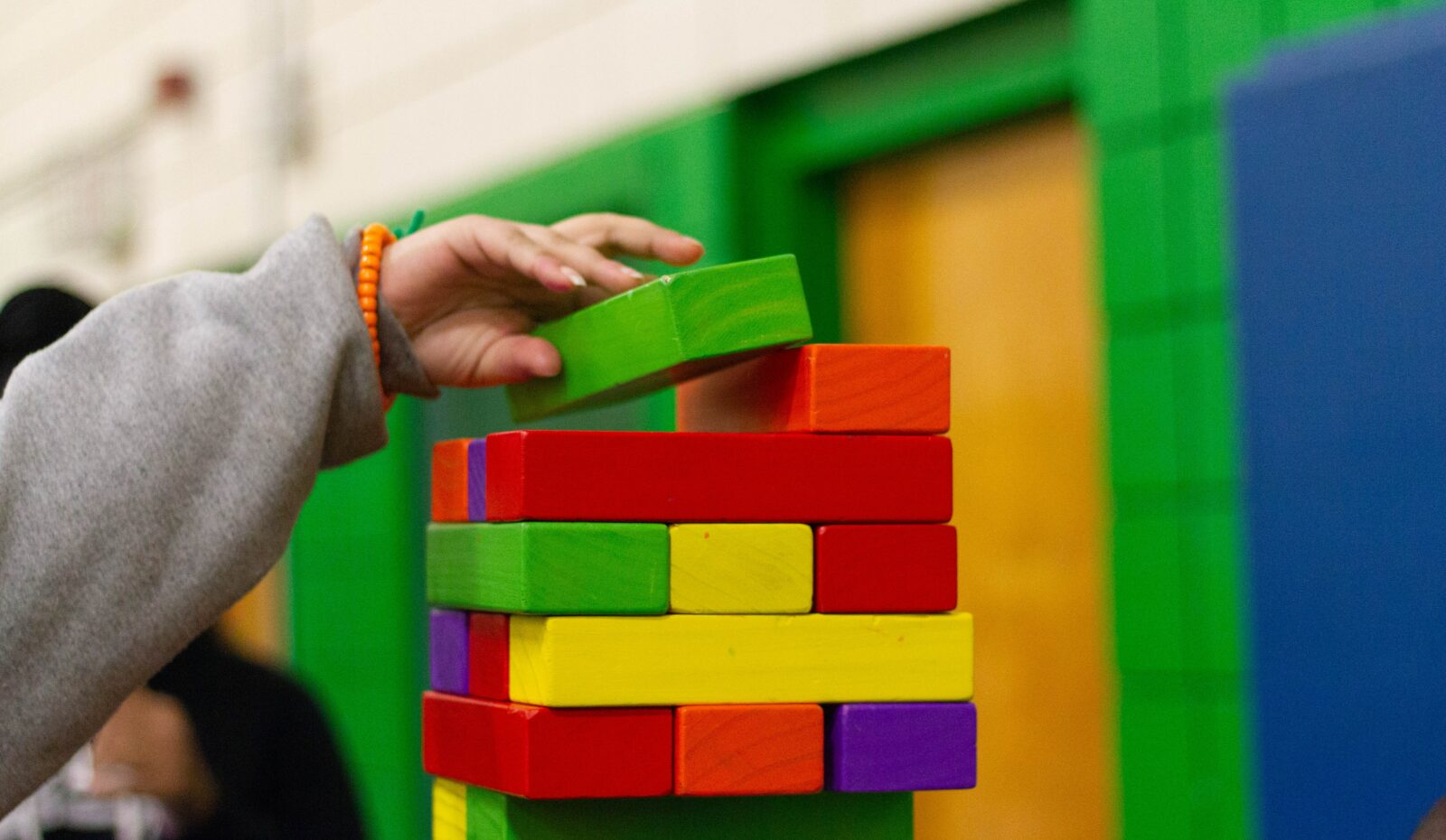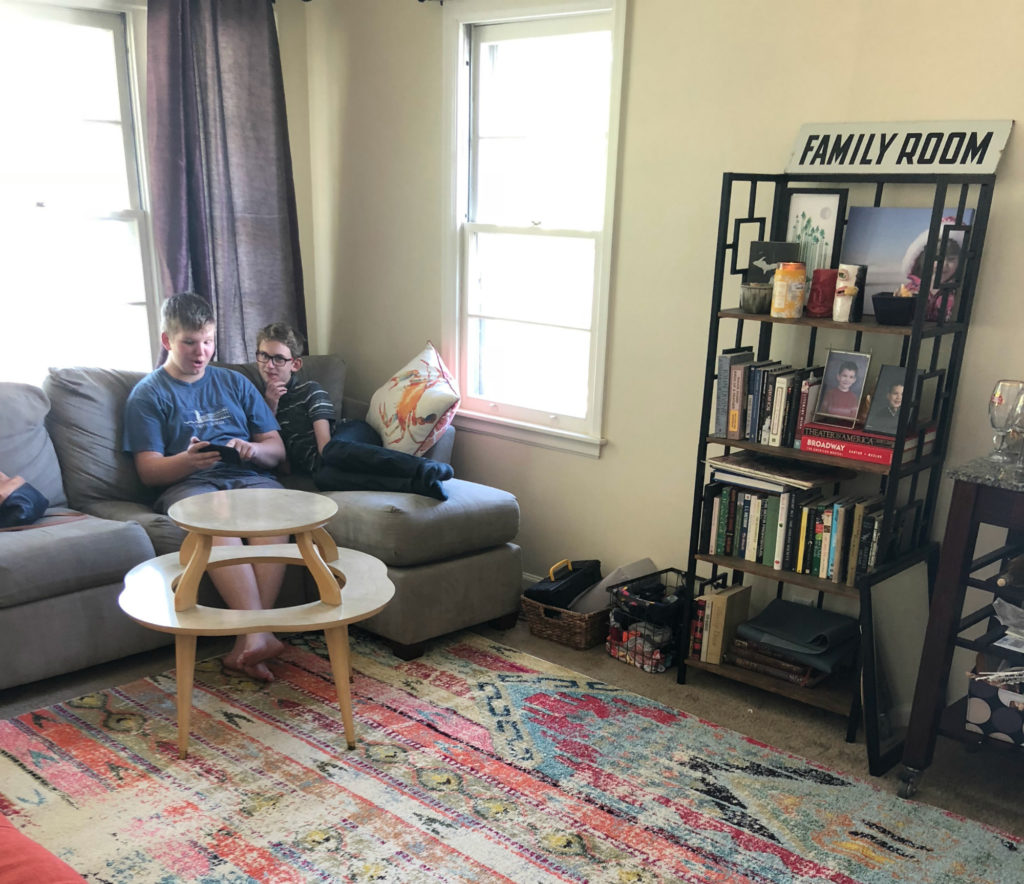This week we’re revisiting a post from 2018 (a year our kids spanned preschool through high school!) about supporting classroom learning in our home environments – in ways that worked for our unique personalities and parenting styles. Enjoy!
When you hear the phrase “support school learning at home,” do flash cards come to mind? Or late-night battles of will over a tri-fold poster board? As busy moms with many kids in school, it’s our goal to raise kids who love to learn, and to support hardworking teachers by creating a home environment and family culture that supports school learning–in a way that feels natural, not forced. Fewer flash cards, more family walks around the block; less pressure, more fun.
Here are six easy ways you and your family can continue learning at home during the school year:
Model Curiosity & Critical Thinking
Sarah: My kids ask a LOT of questions…about everything! It’s fun to use our Google Home to get answers to questions like “Why do dogs eat their own vomit?” (trust me, the answer is interesting!), but I also want my kids to have the skills to look up answers to their questions from a trusted source like a book or article. We keep non-fiction books by DK or National Geographic on a handy shelf for easy reference, and I let my kids watch over my shoulder when I do an online search, because the critical thinking required to sort reliable information from internet baloney is something I want them to practice early and often.
Bring Math & Language Learning Into Everyday Life
Meagan: The way I see it, my kids spend all day doing formalized learning at school. Home is the place for learning to happen in such a natural and fun way, we almost don’t even know it’s happening (Mom included!). Whether measuring ingredients for the nightly meal, singing along with a musical soundtrack, or choosing a fun saying for your kitchen letterboard, look for low-key ways to incorporate math and language learning into everyday life. But don’t try too hard: some of the best learning happens while you’re just having fun.
Be A Teacher’s Advocate
Sarah: In a recent podcast episodes we talked about becoming the parent that teachers love, and one of our tips was to be sure you’re taking the time to participate in the two-way teacher-parent communication process. Read the weekly newsletters so you can prompt your kid with thoughtful questions about what they’re learning; write a note to let teachers know when your kid is particularly engaged in a subject (teachers get a lot of emails about the not-so-happy kids–it means a lot to hear about a kid who is gobbling up the solar system unit).
Promote Rest & Leisure Time
Meagan: At my fourth-grade daughter’s back-to-school night, her teacher made a point of telling us how little downtime the kids get during a typical school day. Thinking about the fact that school kids are often thinking and working for eight hours each day (plus after-school sports and activities) reminded me how important it is to give them plenty of opportunities to chill out at home. I try to allow kids to explore their interests in a low-key way, whether it’s watching craft videos or listening to an audiobook, without jumping in to “direct” their activities or add pressure about how they should be using their downtime.
Get Out In Your Community
Sarah: Classroom learning can take kids only so far, but practical life experience is where all those ideas come together in a real-world way. Look for live music and theater opportunities that tie in to a social studies unit, or get out in nature for stargazing, tide pools, or bird watching to support science. Doing these kinds of things as a family has the added benefit of showing kids that learning isn’t isolated to school days–it’s part of the experience of being human. Plus, when they head back to class they’ll have stories and artifacts to share, further enhancing the learning experience.
Rethink The “Well-Rounded Kid”
Meagan: Sarah and I are both advocates of letting kids go down rabbit holes and immerse themselves wholeheartedly in an interest, even when it seems a little obsessive or frivolous to us. A kid who eats, sleeps, and breathes Minecraft or origami or yo-yoing is getting a taste of what’s it’s like to follow a passion, and we’ve both seen the benefits: engaged, enthusiastic kids, proud of their knowledge and ready to share it with others.
Photo by La-Rel Easter on Unsplash




Leave a Reply